As part of our ongoing vineyard blog series, we discuss the winter trials we’ve started at Double Black Vineyard on the Black Sage Bench. After two harsh winters, we’re doing everything we can to ensure a sustainable path forward for our estate vineyards.
If you’ve been following our blog series, you know about the winter damage that occurred after an extreme cold snap just over a year ago. We’ve discussed the substantial changes we’re making across our estate, adapting our varietal mix and implementing forward-looking vineyard design changes. As our climate pushes to the extremes, we’re also evaluating new viticultural practices to protect against future extreme cold events.
Grape vines, specifically the European grape species vitis vinifera, are prone to injury beginning around -18°C. Some varieties, like Syrah or Sauvignon Blanc, are more cold sensitive, while others are hardier. Cold acclimation is also an important consideration. Think about when you get back from a trip down south during the winter. The temperature feels a lot colder than when you left. Grapevines aren’t that different.
That’s why, as an industry, we measure bud hardiness throughout the winter. The British Columbia Grapegrowers’ Association publishes regular reports, comparing bud hardiness by variety and location. Here is an example from December 10th:
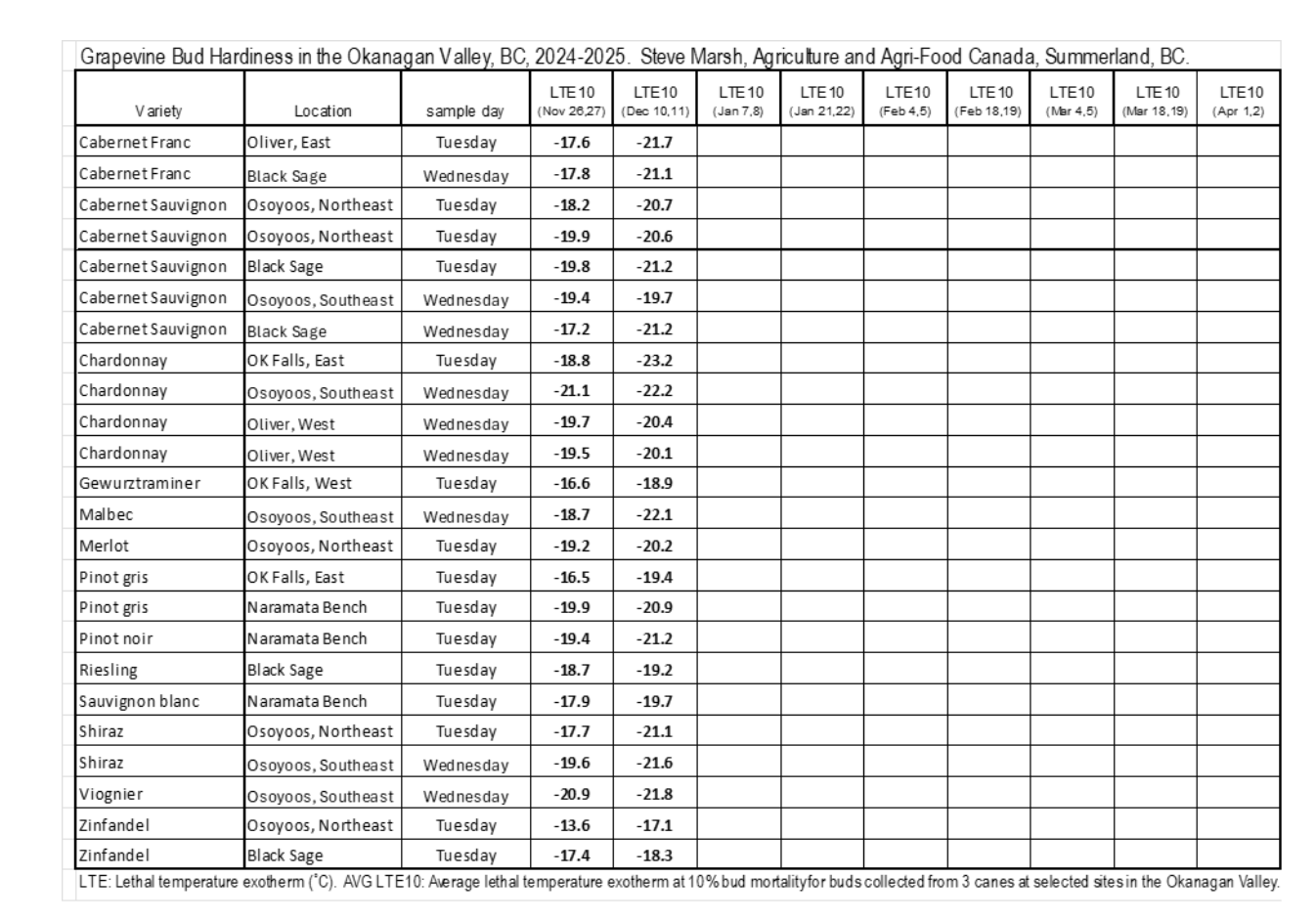
The LTE10 is the average temperature at which 10 percent of buds are killed. You can think of this as a potential 10 percent reduction in yields. As you can see, the bud hardiness varies significantly by variety, ranging from only -17.1°C for Zinfandel to -23.2°C for Chardonnay.
The same tests are performed for LTE50 and LTE90, the latter representing a catastrophic event similar to last year.
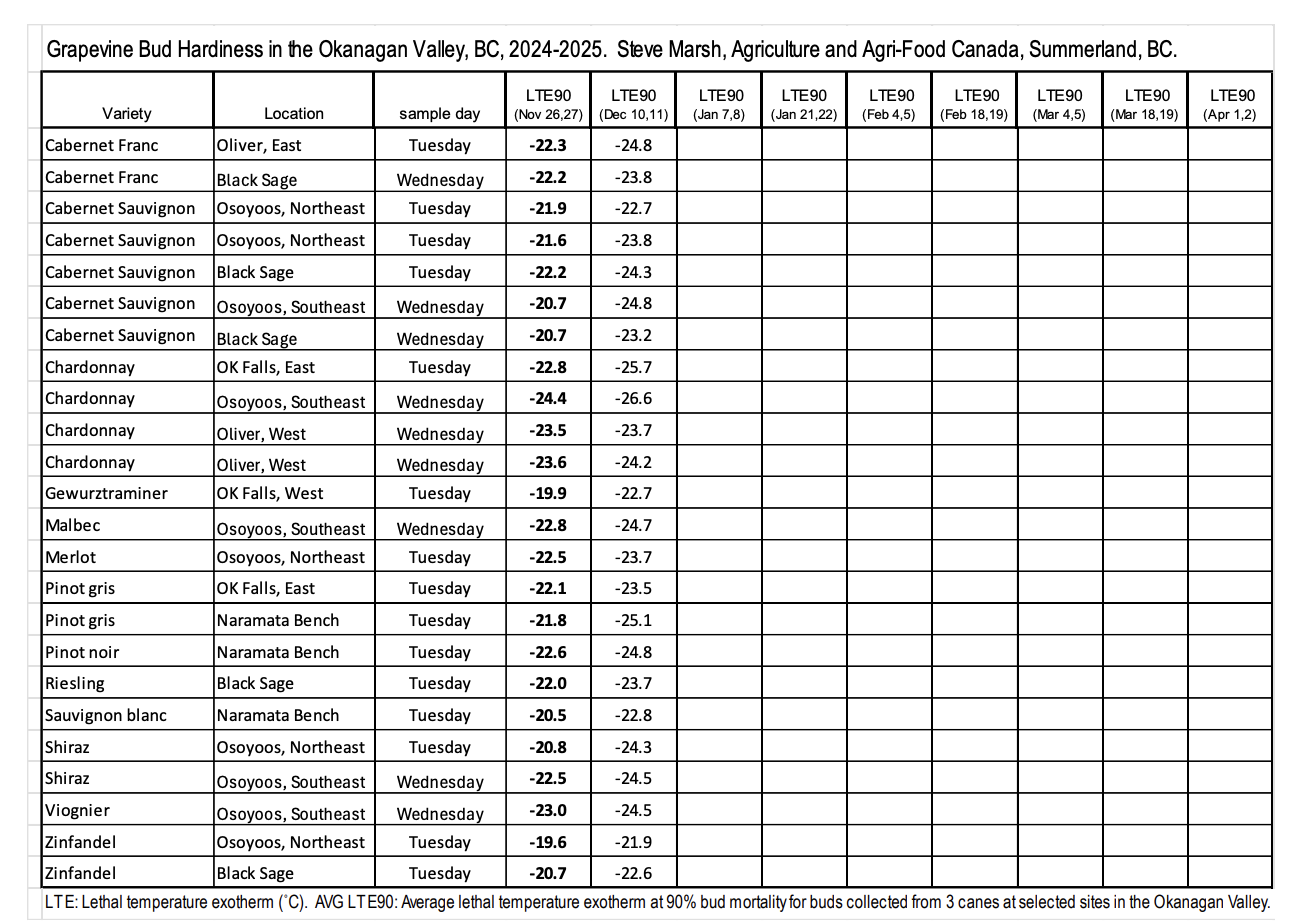
As the chart illustrates, temperatures under -26.6°C would kill over 90 percent of all buds, across all varieties and locations. And that’s just about what happened last year. Temperatures dropped as low as -27°C on the Black Sage Bench. Simply put, vitis vinifera cannot naturally survive such extreme cold events – regardless of grape variety or vineyard design.
Cold injury is not a new concern for the Okanagan Valley. Between 1916 and 2006, there were 16 winter freeze events according to Quamme et al.:
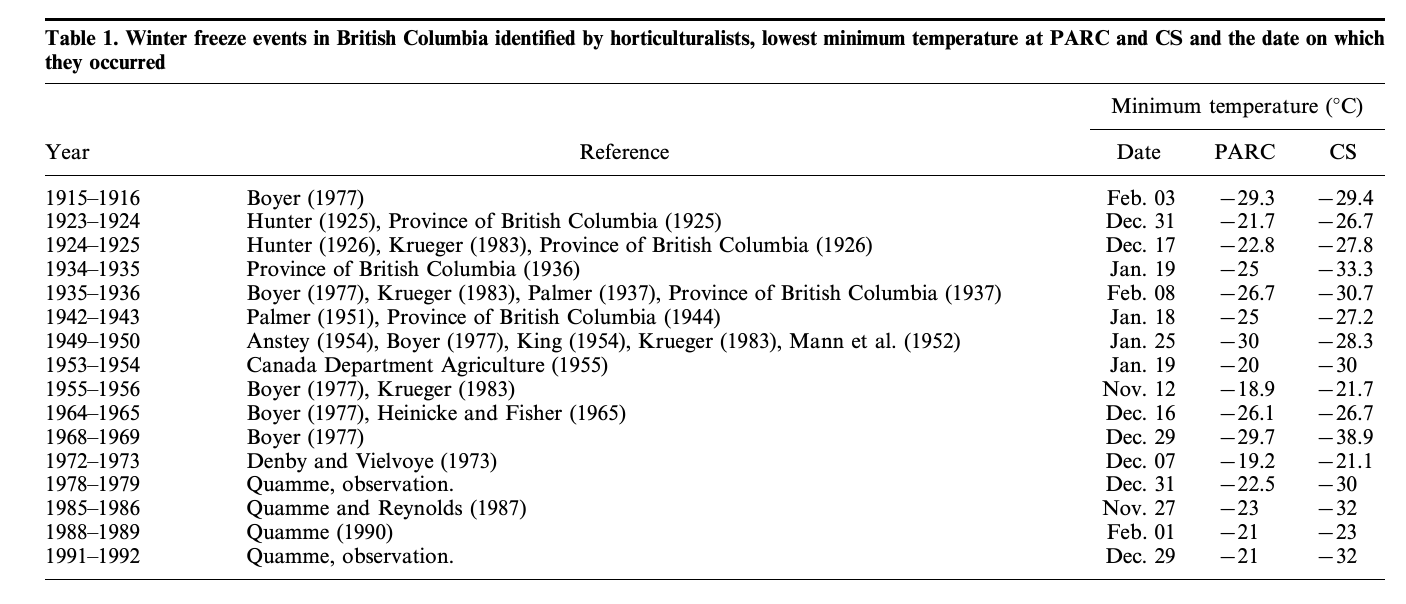
Quamme, H. A., A. J. Cannon, D. Neilsen, J. M. Caprio, and W. G. Taylor. “The Potential Impact of Climate Change on the Occurrence of Winter Freeze Events in Six Fruit Crops Grown in the Okanagan Valley.” Canadian Journal of Plant Science 89, no. 1 (2009): 87.
Our concern is that these may no longer be rare, once-in-6-year events. And, worse, that they may be becoming more extreme. Research indicates that polar vortex disruptions could be becoming more frequent, likely a result of rising temperatures in the Arctic. The polar vortex forms over the North Pole during the winter. However, if the polar vortex stretches or breaks apart it can send cold air further south with severe consequences.
It’s challenging enough to suffer a loss of production due to bud damage. Losing vines, or an entire vineyard, is even more devastating. It’s not just the financial cost of replanting. Losing three years of production before the vineyard yields its first, small crop is simply not sustainable. This is why we’ve started a series of trials at Double Black Vineyard to evaluate how we can improve the cold hardiness and resilience of our vines.
Using our newly planted block of Tempranillo, we’re comparing four different winter management techniques. The first is ‘hilling up,’ pushing enough soil onto the vine to cover the graft union. Like a wound or scar, this is the most sensitive part of the plant. We’re not burying the entire vine, unlike in Prince Edward County, but only the graft between the rootstock and scion (or grape variety). Using the natural insulation of the soil, we can significantly mitigate cold events. Even when temperatures dropped to -27°C last year, the temperature below ground was still only -5°C.
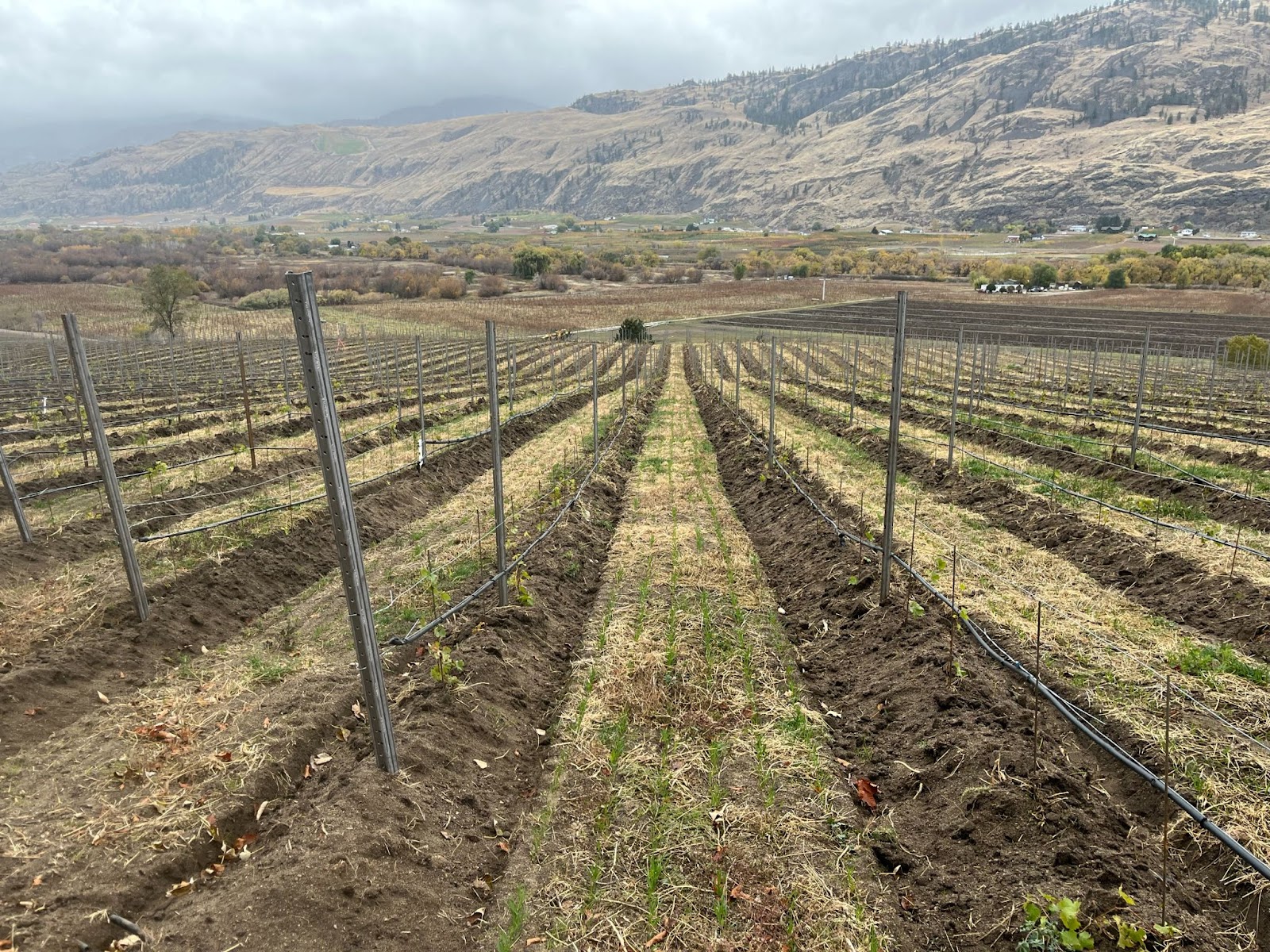
‘Hilling up’ at Black Diamond Vineyard. Photo by Marine Bos, viticultural technician.
We’re comparing this method to two other ground-cover techniques: using hay and compost. Similar to ‘hilling up,’ the aim of both is to protect the graft union. This doesn’t shield buds from potential cold damage, but helps to prevent the loss of the entire vine. If the buds are killed, we can still train a new trunk from the graft union using the vine’s existing root structure. If this were to happen, our production would be affected for one year but should recover quickly afterward.
Lastly, we’re also trialing geotextiles, which is already being used by some vineyards in Prince Edward County and Quebec. The entire plant is blanketed and insulated, protecting both the graft union and buds. It requires existing vineyards to be retrained lower to the ground, as shown in the photo below, which may limit its suitability for all vineyards. But that’s no issue with our young Tempranillo vines, planted last spring.
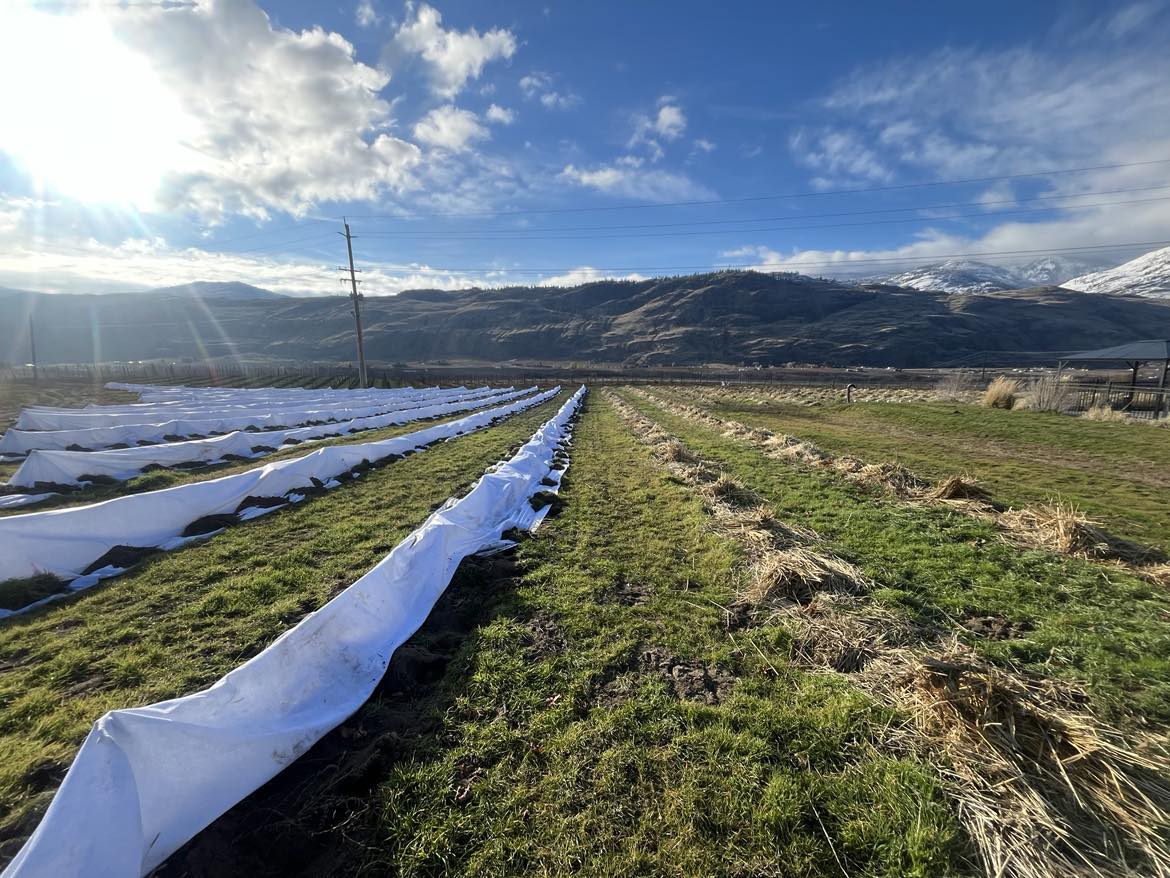
Photo of geotextiles (left) and hay (right) at Double Black Vineyard. Photo by Marine Bos, viticultural technician.
We’re monitoring both the temperature near the trunk as well as bud hardiness to compare all four techniques, with research conducted in partnership with Summerland RDC Wine Grape Research. It’s still too early to draw any conclusive results, but we know we’ll be implementing changes for our estate’s long-term resiliency and sustainability. It’s all part of looking forward as we adapt to our changing climate on the Black Sage Bench.